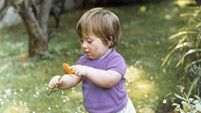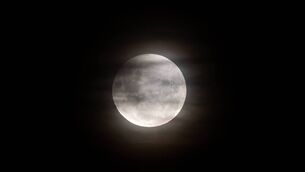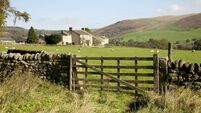The gift of Irish wildlife in a book
Here are some wildlife and natural history suggestions: Dave Campbell and Margaret Healion’s Voice of the Great Spirit will appeal to readers of a pantheistic disposition. Campbell hails from Bangor in Co Down. His atmospheric photo-essay celebrates Knight Inlet, a fjord on the Canadian Pacific coast north of Vancouver. The book opens with shots of overcast, almost crepuscular, sub-arctic landscapes. Then animals are introduced. Grizzly bears appear in unusual, often humanlike, poses. Healion’s crisp quasi-oracular comments punctuate this visual symphony and end in a mystical creation myth; ‘The ear of his ear could no longer hear; the eyes of his eyes were blind. Creator covered his face and looked away and the ice continued to melt’, etc. The fusion of photographs and prose is seamless.
To those who prefer more down-to-earth material, Aideen Cooper’s The River Shannon, a Journey down Ireland’s Longest River, may be more appealing. The catchment of the longest river in Ireland and Britain extends to a fifth of our island. Navigable for most of its length, the Shannon played a pivotal role in Irish history. Clonmacnoise, for example, was a ‘centre of excellence’ known throughout Europe. The Vikings used the waterway to penetrate the country. The Normans fortified Limerick, creating the largest settlement on the Shannon’s banks, the ‘broken treaty’ of 1691 leading to the ‘wild goose’ exodus. On a more positive note, the power station at Ardnacrusha was, until overtaken by America’s Hoover Dam, the largest hydro-electric installation in the world. That a fledgling insecure state, recovering from a vicious civil war, embarked on such an ambitious project is extraordinary. The village of Foynes and the swamp at Rineanna, which became Shannon Airpor t, were the hubs of transatlantic aviation from the ’30s to the ’60s.
Aiveen Cooper travels the length of the great river, recounting the history and mythology of locations through which it passes. She’s a zoologist by training so the river’s flora and fauna, ignored by traditional historians, get due mention: the Shannon-Fergus estuary is one of the great wetlands of Europe. Attractive photographs embellish the text.
Dick Warner will review Jim Wilson and Mark Carmody’s excellent Fresh-water Birds of Ireland so I won’t dwell on it here. There’s another offering for bird lovers. Eric Dempsey’s Birdwatching in Ireland is crammed with information and advice from a leader in his field.
Recommendations on binoculars, telescopes and guidebooks are followed by sections devoted to birdsong, migration and nesting. The glossary of curious jargon used by ‘twitchers’ tells us that ‘sibes’ are rare birds from Asia, ‘dipping’ is failing to see a sought-after rarity while ‘stringing’ is claiming to have seen a bird when the claimant knows perfectly well that he hasn’t. Dempsey, who writes from the heart, has a sense of humour. A photo caption reads; ‘One of the great wonders of the world; no, not the Taj Mahal, the River Lapwings nearby’.
Nineteen well-known British writers contribute to a collection of tales, à la Aesop, published in aid of the Woodlands Trust; five trees, it’s claimed, will be planted by the Trust for every copy sold. Why Willows Weep, Contemporary Tales from the Woods is edited by Tracy Chevalier. Each fable features a particular tree. Chevalier’s own offering ‘explains’ why the birch tree has a silver bark. The stories, penned with a lightness of touch and dwelling on unique characteristics of the trees featured, are entertaining and informative. This enjoyable book, with illustrations by Leanne Shapton, should suit all tastes.
Voice of the Great Spirit by Dave Campbell and Margaret Healion. Pine Forest Press. $40.
The River Shannon, a Journey down Ireland’s longest River by Aiveen Cooper. The Collins Press. €24.99.
Fresh-water Birds of Ireland by Jim Wilson and Mark Carmody. The Collins Press. €20.
Birdwatching in Ireland by Eric Dempsey. Gill & Macmillan. €19.99.
Why Willows Weep, Contemporary Tales from the Woods edited by Tracy Chevalier and Simon Prosser and illustrated by Leanne Shapton. IndieBooks. £12.95 plus £3.95 pp from www.woodlandstrust.org.uk.













